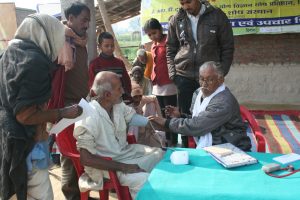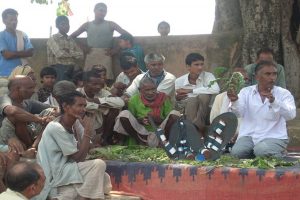
The WHO estimated that about 80% population of the world relies on traditional medicine for primary healthcare needs. India has been rich in traditional system of medicine since ancient times but traditional healthcare has been a neglected area by the government. About 70% of India’s population reside in rural area and depend primarily on traditional medicine. That is evident from the fact that in 2002, investment in healthcare was only 0.9% of the total GDP. The scenario surprisingly is not very pleasing one. Data shows that every second child in the country suffers from malnutrition, and that over 1,000 people succumb to tuberculosis every day. Almost 60,000 children are born with HIV each year. Basic health care and health assurance seem to be a distant dream for most of the population. India is a country where people are treated for the most basic diseases. Though the government has achieved success in implementation of a medical treatment infrastructure in urban areas, it has failed in the rural areas where the 70% of India’s population live. 50% of the diseases that are prevalent in the villages are due to unclean drinking water. The need is to establish a more achievable and simple health system which can ensure good healthcare of the villagers. There is a proverb ‘if health is lost everything is lost’. If a person is unhealthy, he cannot work to his full potential. So a self-reliant life pattern in the villages can only be achieved if a priority is given to the health needs of the villagers.

Interventions in the Self Reliance Campaign – Good Health
| Intervention | Activity | ||
|---|---|---|---|
| 1 | Promote hygienic living conditions | Promotion and educating of hygienic Living | Motivational Program for Villagers for collective Participation in keeping the village neat and clean |
| Awarness Program for Villagers about the ill effcts of un healthy habbits | |||
| Collective Efforts for clean and green village (Shram sadhana) | |||
| 2 | Promote safe drinking water | Use of Safe Drinking water | Water testing and Purification |
| Proper storage of drinking water | |||
| 3 | Reduce Malnutrition | Balance Diet | Nutritional Kitchen Garden |
| Design and Development of low/minimum cost nutitional diet | |||
| 4 | Increase primary health facilities | Enabling treatment of common ailments | Selection and Training of village health worker for use of Dadi Maa ka batua |
| Formation of Health Groups | |||
| Training of village health worker for Treatment of Seasonal Disease with locally Available herbs | |||
| Health awarness Campaign | |||
| Garbhastya Shishu Sanskar | |||
| Vaccination Programs for children and pregnant women | |||
| Healthy Child Competitions | |||
| Women and child care awarness program | |||
| Plantation of tulsi and guruchi | |||
| Organising health and dental camps | |||
| Paramparagat Vaidya Sammelan | |||
| 5 | Create Awareness for birth control | Implementation of Family planning programs | Motivational Program for family Planning |
